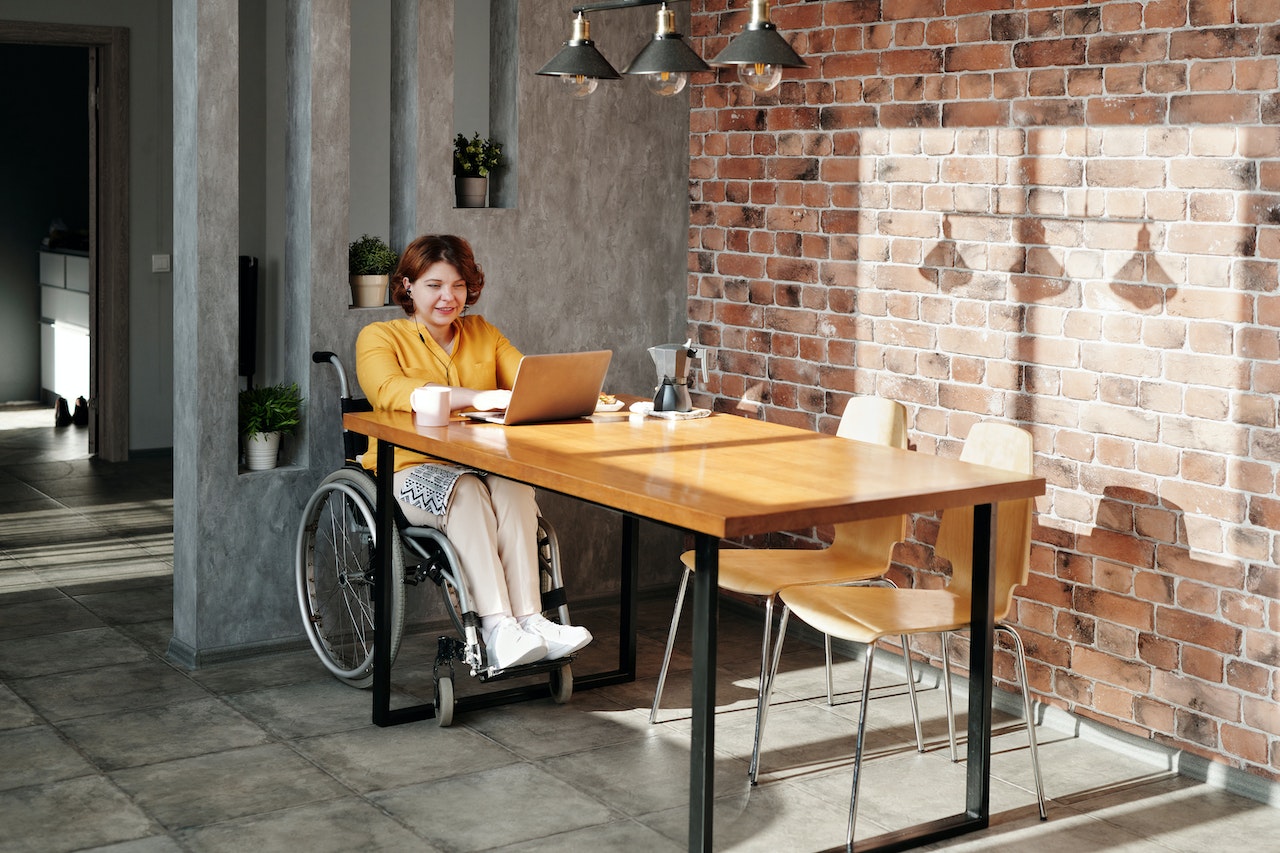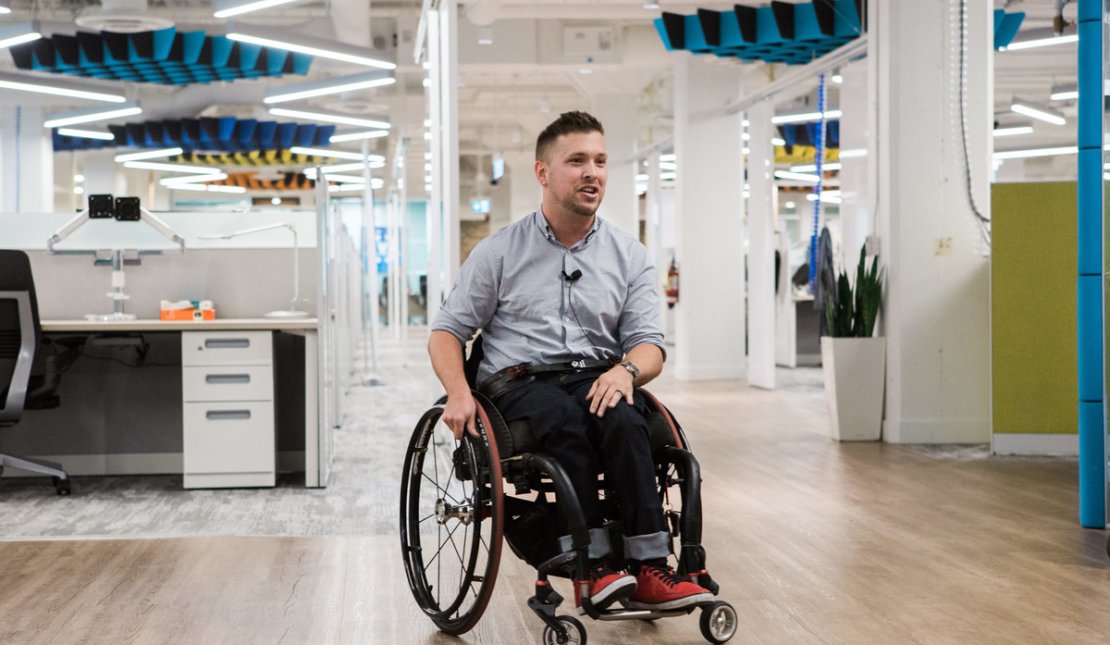Remote work as an opportunity for people with disabilities
Published

The relationship between remote work culture and workers with disabilities has been positive from the start. People who have difficulty adapting to traditional work environments often find it easier to work from home, where they have more control over their surroundings.
However, that doesn't mean that remote work is always easier for people with disabilities. Even as the number of remote workplaces increases rapidly, many people with disabilities continue to face challenges in the workplace. Companies that employ remote workers can provide unique opportunities for people with disabilities around the world, but these companies must also recognize and address the challenges their employees face.
What challenges do remote workers face today?

Those : rickhansen.com
The same disabilities that affect workers in traditional workplaces also apply to remote workers. While the nature of remote work means colleagues see each other less often, that doesn't mean people with disabilities who work remotely no longer need to make accommodations.
Neurodiverse people, for example, face particular challenges when working remotely. A person living on the autism spectrum may struggle with particular sociotechnical challenges when participating in video conferences. People who have to consciously adapt to a traditional social environment can quickly burn out if overstimulated. In a remote work environment where social interactions are hidden behind screens, these pressures become even more complex.
Although much of the conversation about neurodiversity focuses on people with autism, they are far from the only ones who fall into the category of neurodiverse people. Most common definitions include people with ADHD and OCD, as well as people with dyslexia and dyscalculia. These people often face various issues when working remotely.
People with anxiety, depression, and other mental health issues often do not fall within the accepted definition of neurodivergence. However, depression and anxiety in many cases meet the definition of psychiatric disabilities. Those struggling with mental health issues may struggle with physical isolation, unstructured environments, and other challenges when working remotely. Now that the taboo surrounding mental health is beginning to fade, employers must be prepared to recognize and support employees who face mental health barriers.
Remote work can make the lives of people with physical disabilities easier, but the ability to work remotely does not negate their experiences. Someone who relies on a mobility aid may find it more convenient to move around at home rather than commuting to an office, but not everyone has the means to make their home office 100% accessible. People with disabilities also earn less on average than people without disabilities, leaving many with less money to create or occupy spaces that meet their needs.
People with chronic illnesses such as chronic pain and Crohn's disease struggle with spatial and temporal problems. People with these conditions may need to rest or go to the bathroom more often, which is easier to accomplish at home but can still make it difficult to maintain a consistent schedule.
Special challenges with remote work

Those : thediversitymovement.com
Anyone struggling with aspects of remote work should not be made to feel that remote work is a sufficient solution in itself. Physical, neurological and mental disabilities can still make life difficult for remote workers.
Allowing employees to work from home saves the employer money on office space, but that burden is transferred to the employee. Workers with disabilities must set up their own office at home, and not all living spaces are designed to accommodate workstations. This is especially true for people who need more space to move around, such as wheelchair users.
Remote workers spend much of their time online. Most websites still do not provide navigation options for people with certain disabilities. WebAIM found that 97.8% of pages across the top 1,300 websites in its 2020 study had accessibility errors that could be detected through an automated scan.
The challenges of remote work, common to all remote workers, sometimes particularly affect people with disabilities. For example, the “water cooler problem” describes the difficulty remote workers have in being included in casual conversations with colleagues and management. While frivolous on the surface, these conversations impact relationships, advancement opportunities, and business decisions. Remote workers who don't feel comfortable sharing their screen with others or who take frequent breaks to rest or go to the bathroom may miss important conversations, even as remote organizations make an effort to allow casual banter make possible.
All of these challenges assume that remote work is an option, which unfortunately is not the case for many. Some people work in industries where remote work has not yet become the norm, even after the COVID-19 pandemic. Many companies still insist on physical offices and refuse to allow employees to work remotely. People with disabilities who would prefer to work from home do not always have the opportunity to do so.
How employers can welcome remote workers with disabilities
The most obvious way for employers to make it easier for employees with disabilities to work remotely is to make remote work an option for everyone. People with disabilities may feel excluded or ashamed for working remotely when no one else has that privilege. When companies adopt remote work as a general policy, people with disabilities don't feel forced to make a choice between appearing "normal" and prioritizing their well-being.
Companies should also ensure that their internal systems and tools comply with national guidelines. Accessibility issues can frustrate people with a wide range of disabilities. When people have difficulty reading text, distinguishing images, and following conversations, they understandably become frustrated.
These changes do not necessarily require new tools or code. A simple policy that allows participants to turn off their cameras during meetings can help more people feel welcome. So encourage everyone to take advantage of screenless meetings occasionally so that those who prefer this option don't feel like an outsider.
Making remote work possible for everyone

Those : ecosecretariat.org
Disability accommodation laws around the world provide the foundation for remote organizations to accommodate employees with disabilities. Remote work has already begun to reshape collaboration and community. Companies need to make remote workers with disabilities feel as welcome as everyone else.








